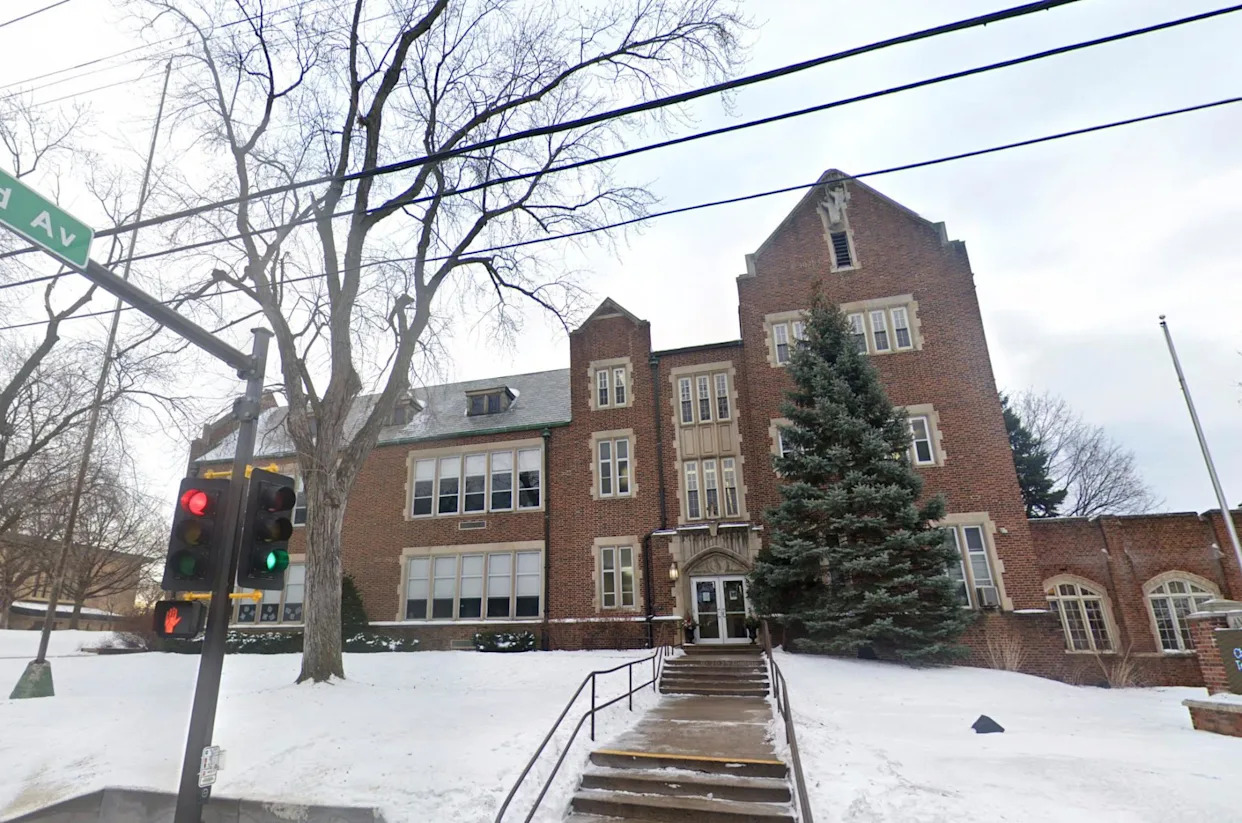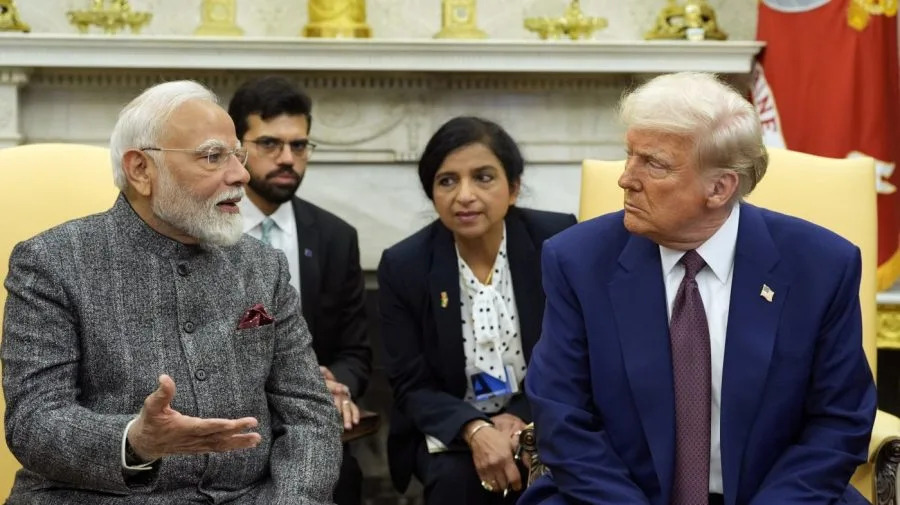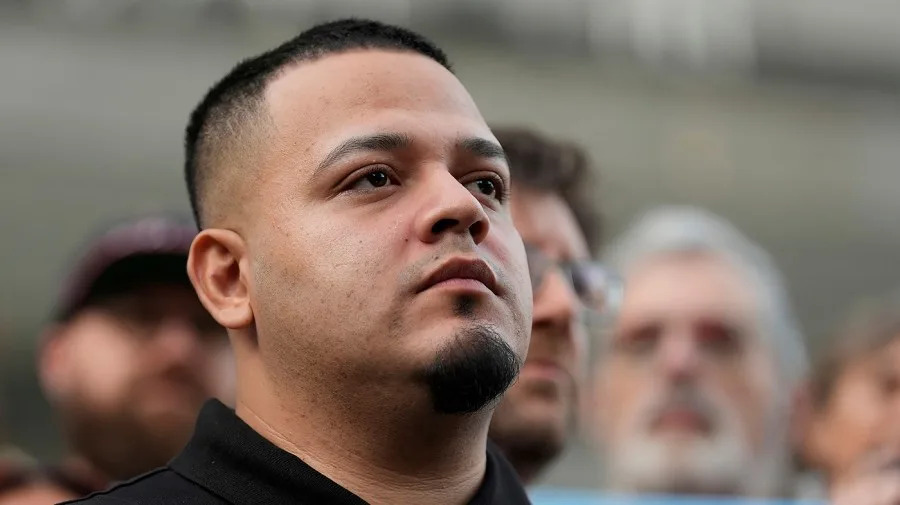
The Atlantic Daily, a newsletter that guides you through the biggest stories of the day, helps you discover new ideas, and recommends the best in culture. Sign up for it here.
When Dominique Thornhill tried to get a loan to launch a child-care center in 2020, every conventional bank she approached glanced at her thick business plan and slim finances, then turned her away. “I thought that’s what small-business loans were supposed to support, but I didn’t receive that support at all,” the former Pittsburgh-public-school teacher told me. “Instead, it was Come back to us when you’re already established.” Five years later, Thornhill now runs three child-care locations—her ascent made possible by a little-known, federally backed lending program that President Donald Trump is trying to shut down.
The Community Development Financial Institutions Fund, part of the Treasury Department, is under threat from Trump’s Office of Management and Budget, even as Republicans and Democrats in Congress fight to ensure that its dollars continue to flow to communities where the traditional banking system is often out of reach.
Most of the $324 million that Congress allocated for the fund for this fiscal year, which ends September 30, has been frozen for months. The community lenders that rely on the money—known as CDFIs—fear that they may be forced to scale back programs like the one that helped Thornhill, or shut down altogether. Behind the scenes, a power struggle has broken out. Treasury Secretary Scott Bessent has publicly defended CDFIs, while OMB, led by Russell Vought, has slammed their work as “anti-white” and representative of the kind of diversity, equity, and inclusion policies that Trump has pledged to root out of American life. A bipartisan group of senators—including Republicans from seven of the 12 states where Trump carried more than 60 percent of the vote in November—has pressured the administration to release the money even as the White House floats the prospect of withholding it indefinitely, defying Congress’s power of the purse.
The total amount of money at stake is in the billions, representing a mix of public and private funds. A disproportionate share has flowed to rural areas—the kinds of places where Trump flags fly even when it’s not campaign season. The standoff is the latest example of the White House’s aggressive push to cut government spending and eliminate DEI running headlong into its pledge to look out for the so-called forgotten man in the reddest parts of the country. As the Trump administration moves to slash the nation’s social safety net, the CDFI Fund represents a small but pivotal test case of its willingness to cross the voters who powered the president’s 2024 victory.
[Read: Medicaid cuts will be a disaster for ERs]
The fate of the money will be decided in the coming weeks. The outcome could help determine how much power the White House has to block congressionally mandated spending, according to current and former Treasury Department officials I spoke with, some of whom spoke on the condition of anonymity because they were not authorized to comment publicly. “The clock is ticking, and at the end of the day, who’s really in charge?” one Treasury official, who has worked on the program, told me. “Is it Congress, who appropriated these funds? Is it the agency head that should be making these decisions? Or is it Russ Vought?”
First launched more than three decades ago, the CDFI Fund had long enjoyed bipartisan support and sparked quiet but exponential growth in the community-banking sector. Then came a March 14 executive order, when it landed on a list of government entities that Trump vowed to eliminate.
The fund supports grants, capital, and other forms of aid to local banks, credit unions, and similar lenders whose mission is community development rather than profit generation. The money ultimately goes to low-interest and small-dollar loans, affordable housing, and other community projects, and pays for personalized technical assistance and counseling for aspiring entrepreneurs. Many of the government grants are paired with private-sector investments and donations. Invest PGH, the Pittsburgh-based CDFI that helped Thornhill start her child-care business, provided a $20,000 microloan at 3 percent interest, and a $25,000 forgivable loan. The nonprofit also paired her with a mentor who had previously started a child-care center. Similar CDFI programs have helped launch roadside restaurants in West Virginia and hardware stores in South Dakota.
Trump’s executive order calling for an end to such programs sparked a rush of group calls and text chains among leaders of many of the 1,400 CDFIs across the country, one former Treasury Department official told me. “We were all on the phone together by noon the next day, organizing,” said the former official, who now works for a CDFI. “It was an urban-rural coalition.” The order had directed the Treasury Department to eliminate any “non-statutory components” of the CDFI Fund to the “maximum extent consistent with applicable law” and confirm compliance with Vought.
The following week, Bessent responded by telling OMB that the entire CDFI Fund was “performing its statutory functions as required by law,” suggesting that it would not be dismantled. Industry leaders were relieved. But even after Bessent defended the fund, OMB held on to the money that usually goes to programs such as the Small Dollar Loan Program, which provides an alternative to costly payday lenders. In the ensuing months, Vought began publicly embracing a legally untested maneuver called a “pocket rescission,” which could allow the administration to overrule Congress and cancel billions of dollars in federal spending. (The Government Accountability Office has declared pocket rescissions illegal.)
As the fiscal year nears its end, a growing number of lawmakers have begun urging Vought to release the funds. Senator Mark Warner, a Democrat from Virginia, told me that he and his colleagues have been trying to convince the administration of the important work being done by the CDFI Fund, including in Trump-friendly areas. For every federal dollar of investment, CDFIs generate $8 in private funds, he said, citing figures often touted by the Treasury Department and industry groups. “Treasury is still supportive of the funding going out,” Warner told me. “We’ve still got a hurdle to overcome at OMB.”
Along with Republican Senator Mike Crapo of Idaho, Warner sent a letter last month to Vought calling on OMB to release the funds that benefit “our most underserved rural and urban communities” and “deliver new capital to America’s forgotten communities.” It was signed by 26 senators, including Republicans from states such as Louisiana, Arkansas, and Alabama. In a separate statement, Senator Jim Justice of West Virginia, a Republican, complained that “red tape” was keeping the funds from flowing to his state. “These funds have been approved for months, and every day they sit unused is a missed opportunity for communities that need them most,” he wrote.
OMB has responded to the bipartisan pushback by increasing its public criticism of the CDFI Fund.
“The CDFI Fund has been used to funnel taxpayer money to politically connected, far-left activists who advance a radical and discriminatory DEI agenda,” an OMB spokesperson told me in a statement. “Many CDFI institutions espouse anti-white, anti-American, and even anti-capitalist rhetoric, in one case decrying a ‘white monopoly on capital.’ This is why we’ve eliminated CDFI in the past 5 Trump budgets.” (Although Trump proposed scaling back the CDFI Fund in his first-term budget proposals, he signed several bills that expanded the program.) The Treasury Department did not respond to my requests for comment.
Donna Gambrell, who led the CDFI Fund from 2007 to 2013, told me she rarely had trouble persuading Republicans to support community banks. “Oftentimes, when I went to Congress as the CDFI Fund director, I could point to a map in a congressional leader’s office, and his or her district would be shown on that map, and I would be able to point out the actual projects that were happening in their districts because of CDFIs,” said Gambrell, who is now the executive director of Appalachian Community Capital, a nonprofit CDFI. Today, such a map would show the program’s funds flowing disproportionately to red states. Florida and Mississippi were the top recipients of CDFI-backed investment over the past decade, each taking in about $30 billion, according to a recent analysis by the Urban Institute. Eight of the 10 congressional districts that received the most CDFI-supported funds are represented by Republicans, the analysis found.
The fund’s statutory mandate is to promote access to capital in America’s “underserved” populations. In rural areas, that often means providing banking services to communities and clients for whom major banks are far away or unavailable. In cities, they serve much the same role. But many CDFIs in urban areas explicitly tout the support they provide to minority populations, which have traditionally suffered from discriminatory lending practices. Invest PGH, for example, celebrates the fact that 84 percent of its forgivable loans for new child-care businesses have gone to women- and minority-owned enterprises. Thornhill, who is Black, said she was motivated to start a day care in part because she wanted to provide a culturally sensitive learning environment for Black and brown students in the Pittsburgh area.
[Read: Why the White House backed down from its first big education cuts]
Trump officials—who have complained without evidence that his supporters have routinely been “debanked” because of their political beliefs—have been open about their goal of blocking such diversity measures and remaking community banking into a more partisan exercise. Trump’s 2026 budget proposal suggests canceling $296 million from the CDFI Fund’s discretionary-grant program and replacing it with a $100 million “Rural Finance Award Program” to “spur economic development in rural America.” The proposal accuses the CDFI Fund of supporting grantees who focused too much on race and “framed American society as inherently oppressive rather than fostering unity.”
That plan has received a chilly reception in Congress, where Warner told me the bipartisan caucus he formed with Crapo in 2022 to back CDFIs has grown to 28 members. “It’s an even number of Democrats and Republicans,” he said. But even if the administration is unable to eliminate the program, it could still find ways to steer the funds away from cities and minorities, according to some officials familiar with the program. The former Treasury official told me they expected the Trump administration to overhaul the grant-application process to ensure that all funds comply with Trump’s executive orders targeting diversity. “They’re going to say: If your application says DEI or anything that is racially oriented, take it out,” the former official said. In the meantime, millions of dollars in grants and other awards are on hold, and many of the people involved in running the CDFI Fund—including its most recent director—are leaving the department, the Treasury official who has worked on the program told me. “It is a mass exodus,” the official said. “People are afraid that it’s not going to exist.”
Critics of the CDFI Fund have decried it as redundant, describing overlap with other poverty-reduction efforts such as Opportunity Zones, the Community Reinvestment Act, and the low-income-housing tax credit. A July 31 report by the Cato Institute argued that little data demonstrate the effectiveness of the CDFI Fund in boosting low-income communities.
The frozen CDFI grant funds do not officially expire until next year, though the White House budget proposal does not anticipate spending the unallocated money in 2026. The proposal also asserts that the CDFI industry—which tripled in total assets from 2018 to 2023, according to the Federal Reserve Bank of New York—has “matured” and should now be “financially self-sustaining.”
But for Thornhill, the federally backed CDFI provided a lifeline at a time when the big banks had repeatedly declined to take a chance on her. She had 10 years of teaching experience and had just completed a Ph.D. in education at the University of Pittsburgh, but she admitted that she was starting with “zero dollars” and a dream.
In the five years since she launched her first child-care facility, known as Each One Teach One Childcare and Learning Center, she has hired 45 people to staff its three locations. When we spoke recently, she was taking her students to see a new bus that she had purchased to pick them up from their homes and drop them off at the end of the day.
Rebecca Davidson-Wagner, the president of Invest PGH, the Pittsburgh-based CDFI that helped Thornhill, touts Thornhill as a success story showcasing how CDFIs can provide transformative assistance to nontraditional borrowers. She told me she is eager to offer more loans to aspiring business owners but isn’t sure that will be possible if the White House permanently blocks the grant money.
“If they don’t release the funding that’s out there, we’re going to have to make decisions about whether we can continue as a CDFI,” she said. “Not to be dramatic, but that is what we’ll have to look at.”





Comments